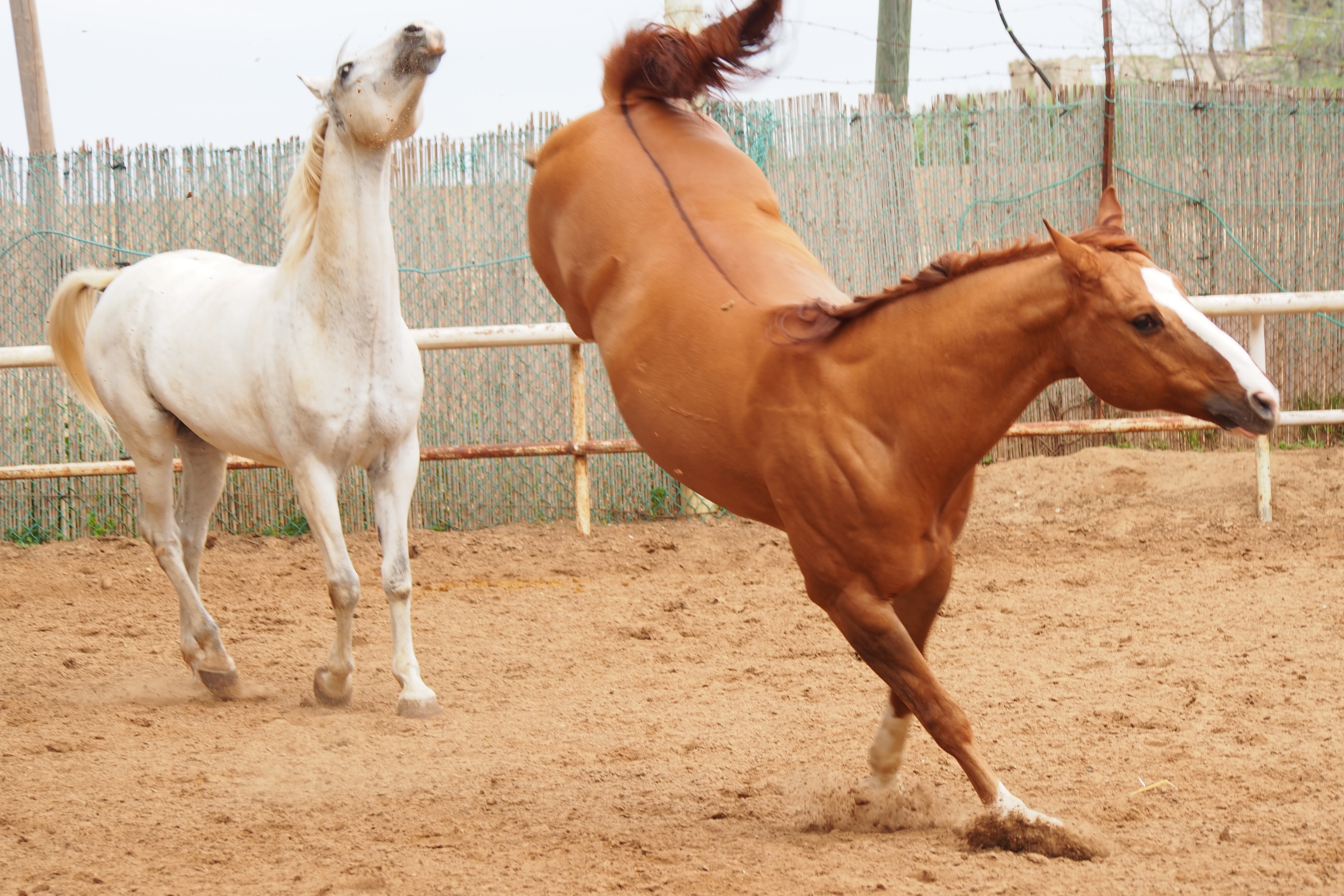Q:What is your opinion on turning out horses wearing hind shoes in groups? A debate is raging at our boarding barn about whether this practice is safe. So far we haven’t had any serious injuries but we’re worried. If a horse with hind shoes kicks another horse, will he do more damage than if he was unshod?
Name withheld by request
A:While we would like to live in a world where horses live in harmony, the reality is that some horses (like some people) don’t always get along. Kicking is part of normal equine behavior and communication, but can be a very dangerous way to get a point across. In addition, excitement or exuberance may cause horses to kick out and sometimes unlucky herdmates get caught in the crossfire.

So how dangerous are kick injuries in horses? In one study of equine injuries, 256 horses sustained a kick injury and in 120 of those a bone was fractured. Among horses with fractures, 34 required euthanasia. In that study, most of the kick injuries occurred when the horses were on pasture.
As your boarding barn debate suggests, shoes are a factor in the severity of equine kick injuries. In a study that investigated the effects of simulated kicks on equine bones, researchers found a significant difference in the amount of damage caused by metal shoes versus polyurethane shoes.
Click here to learn why horses kick.
At a medium velocity, impact by hooves with steel and aluminum shoes resulted in fractures 75 percent of the time or more, while impact by hooves wearing polyurethane shoes or that were unshod did not damage the bones. At a higher velocity, impact by unshod hooves resulted in fractures only 12.5 percent of the time.
So a kick from a horse wearing shoes definitely causes more injury than one from an unshod horse or one wearing polyurethane shoes. And, of course, a stable pasture grouping with a firmly established dominance hierarchy is the safest situation for horses in pasture turnout in general.
Olivia Schroeder, VMD
Northwest Equine
Veterinary Associates
Black Diamond, Washington
Don’t miss out! With the free weekly EQUUS newsletter, you’ll get the latest horse health information delivered right to your in basket! If you’re not already receiving the EQUUS newsletter, click here to sign up. It’s *free*!








